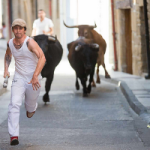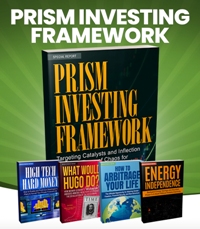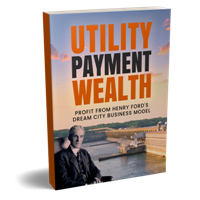 Bill Hillmann is an expert bull runner. He’s also a writer. He married his two passions in a book he co-authored in 2014. The book is titled, “Fiesta: How to Survive the Bulls of Pamplona.” It is a guide for anyone foolish enough to run with the bulls in the legendary San Fermín festival.
Bill Hillmann is an expert bull runner. He’s also a writer. He married his two passions in a book he co-authored in 2014. The book is titled, “Fiesta: How to Survive the Bulls of Pamplona.” It is a guide for anyone foolish enough to run with the bulls in the legendary San Fermín festival.
One month after his book was published, Hillmann put his findings to the acid test. During a run in July 2014, something unexpected happened. A bull named Bravito decided to give him a personal lesson in survival.
Hillmann was gored twice in his right thigh. The horn missed a major artery by a hair. A detail he later said saved his life. He was rushed to the hospital for surgery, but the damage was done.
After Hillmann was gored, his co-author told The New York Times, “We will probably need to update the book.”
You might think that would be the end of Hillmann’s bull-running days. But you would be wrong. The very next year he was back in Pamplona running with the bulls once again.
Hillmann was later gored a second time in the 2017 running of the bulls at Pamplona. True to his book title, he survived.
The point is there are consequences for exposing yourself to undue risk. Hillmann may have twice survived being gored. But this came down to luck, not skill.
Similarly, stock market investors, hopped up on the infinite promise of AI, continue to run with the bulls. It’s a bull market, after all. The thrill is exhilarating so long as you don’t get gored.
Bundling Risk
We’ve seen this show before. The characters and the objects of speculation may have changed. But the plot is generally the same. Today, for caution and edification, let’s look back at a man, a quote, and a colossal crisis that the U.S. economy and the Fed’s balance sheet have yet to recover from.
Chuck Prince was a lawyer turned big banker. He became CEO of Citigroup in 2003. There, he led one of the biggest and most powerful financial institutions in the world during a time of chaos.
If you recall, the mid-2000s were a wild time for finance. The economy was booming, credit was cheap, and the housing market seemed like it could do no wrong. Banks were making huge profits by creating and selling mortgage-backed securities, including those tied to subprime mortgages.
These were loans given to borrowers with poor credit, who were considered a higher risk. The wizards on Wall Street had devised a special way of spreading the risk so that it seemingly disappeared. Specifically, they would bundle thousands of mortgages together, including the subprime ones, and sell them off as a single investment.
The belief was that even if some people defaulted, the sheer volume of loans would make the overall investment secure. Everyone was doing it, and everyone was making big bucks. It was a giant party, and the music was playing loud.
However, in July 2007, things started to get a little shaky. The first signs of trouble were appearing in the housing market. Defaults on those subprime mortgages were beginning to tick up. People were starting to wonder if the party was about to end.
When the Music Stopped
That’s when Chuck Prince gave an interview to the Financial Times where he said:
“When the music stops, in terms of liquidity, things will be complicated. But as long as the music is playing, you’ve got to get up and dance.”
So, what did he mean by that?
Prince was essentially admitting that the whole system was built on a shaky foundation. He understood that the easy credit and massive profits were likely unsustainable and that a crash was inevitable. He was saying that he and his bank were fully aware of the risks they were taking.
The “music” was the flow of easy credit and money, and the “dance” was the highly profitable – and risky – business of creating and trading these mortgage-backed securities.
Unfortunately for Citigroup and the global economy, the music abruptly stopped. Just a few months after his interview, the subprime mortgage crisis erupted. By late 2007, big banks were reporting massive losses related to their mortgage investments. Then, in 2008, the system imploded.
The collapse of Lehman Brothers in September 2008 was the defining moment. It triggered a global financial panic. Credit markets frosted over like the Alaskan tundra as banks became too afraid to lend to one another, fearing who would be next to fail. The liquidity Prince spoke of dried up completely.
Citigroup, like all the big banks, had to be bailed out by the U.S. government. Prince stepped down as CEO in late 2007, just as the crisis was spiraling into the worst financial crisis since the Great Depression.
What’s the point?
What a Bull-Runner Can Teach Us About the AI Bubble
The current AI driven bull market on Wall Street appears to have more in common with the dot com bubble and bust of the late-1990s and early-2000s. But we believe that when the music stops the destruction to financial markets, U.S. government debt, and the Fed’s balance sheet will dwarf what was witnessed during the dot com collapse and the great financial crisis combined.
The stock market, by all standard valuation metrics, is in an extreme bubble. Presumably, valuations will at some point revert to their historic mean. In fact, when they do, they will likely overshoot to the downside. That is how means work.
When exactly this will happen is anyone’s guess. Nonetheless, the bubble has grown so massive that, like Chuck Prince in 2007, the insiders can no longer ignore it.
For example, on August 14, Sam Altman, the CEO of OpenAI and the driving force behind ChatGPT, ate dinner in San Francisco with several OpenAI executives and a small group of reporters. There he shared the following opinion:
“When bubbles happen, smart people get overexcited about a kernel of truth. If you look at most of the bubbles in history, like the tech bubble, there was a real thing. Tech was really important. The internet was a really big deal. People got overexcited. Are we in a phase where investors as a whole are overexcited about AI? My opinion is yes. Is AI the most important thing to happen in a very long time? My opinion is also yes.”
Since Altman’s remarks the NASDAQ has dropped over 600 points, with AI poster child stocks Palantir and Nvidia down about 11.5 percent and about 3.5 percent, respectively.
Is this the top or merely a slight correction before AI stocks continue their moonshot?
Time will certainly tell. But as with any speculative craze, the music will eventually stop. When it does, investors who have been dancing in the streets may find themselves gored, not by a bull in Spain, but by a bear on Wall Street.
[Editor’s note: Have you ever heard of Henry Ford’s dream city of the South? Chances are you haven’t. That’s why I’ve recently published an important special report called, “Utility Payment Wealth – Profit from Henry Ford’s Dream City Business Model.” If discovering how this little-known aspect of American history can make you rich is of interest to you, then I encourage you to pick up a copy. It will cost you less than a penny.]
Sincerely,
MN Gordon
for Economic Prism
Return from What a Bull-Runner Can Teach Us About the AI Bubble to Economic Prism





Even a lay like me could understand